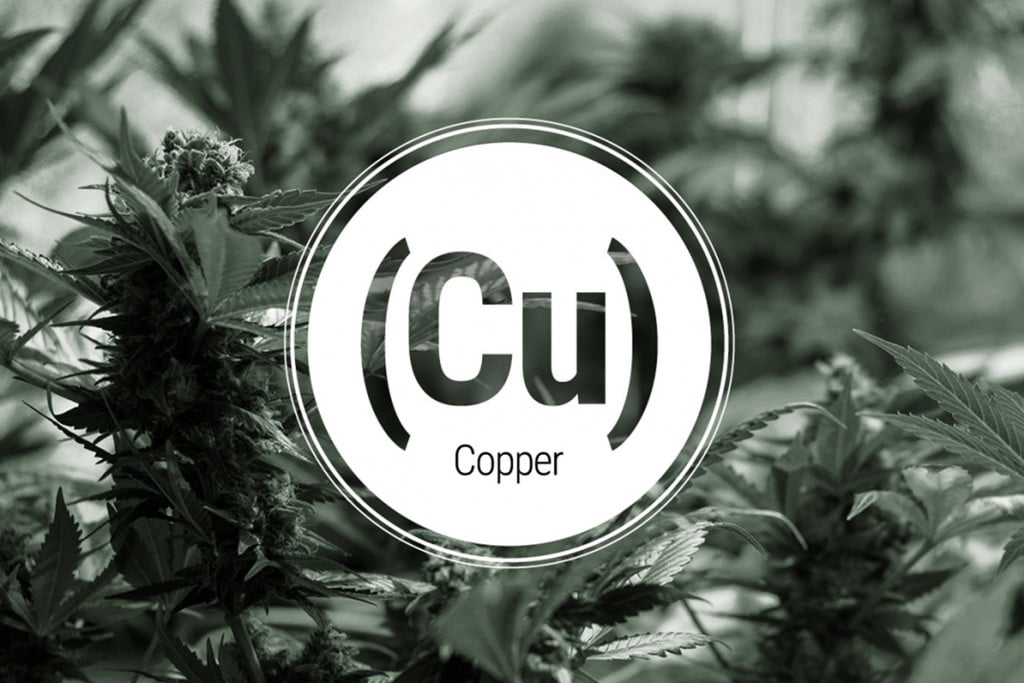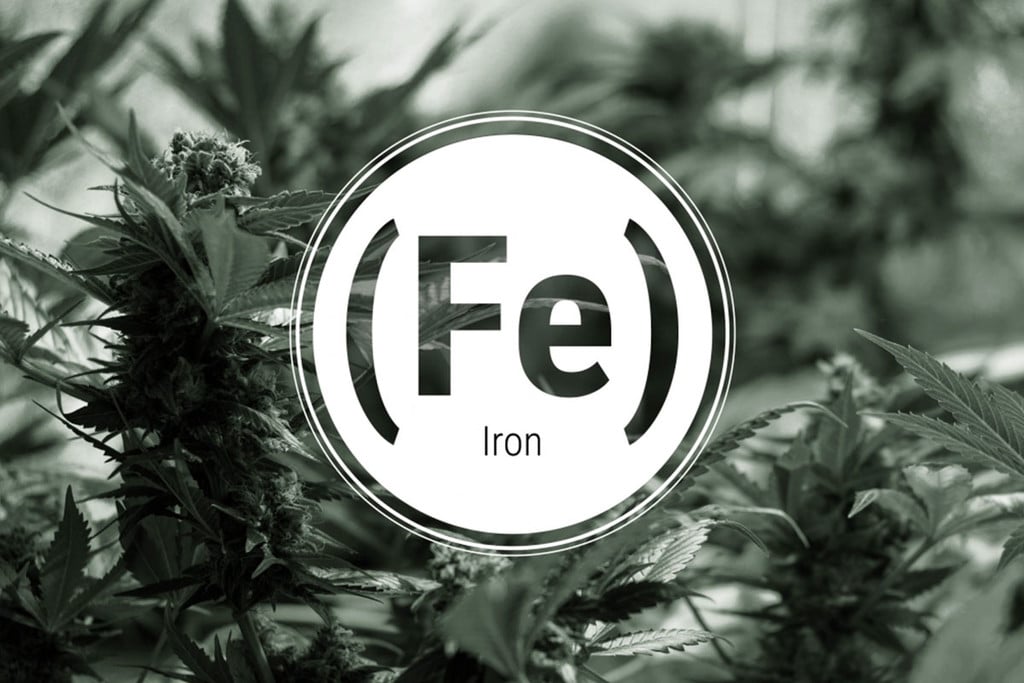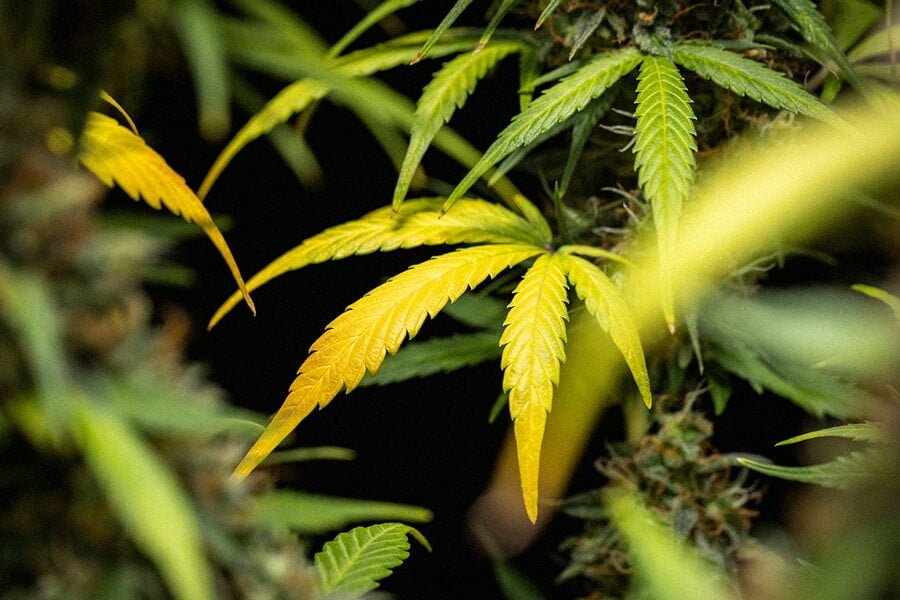.

Molybdenum Deficiency in Cannabis: Signs and Solutions
Molybdenum—ever heard of it? Many cannabis growers pull in successful harvests for years on end before ever running into issues with this element. Although relatively rare, molybdenum deficiency can cause real problems when it rears it head. Learn how to guard your plants against it, and how to solve the issue if it does occur.
Molybdenum is a mineral that plays a fundamental role in plant health and performance. Many cannabis growers have procured harvest after harvest without ever having to read up on this mineral. However, when it’s missing, things can quickly go awry. Below, you’ll learn everything you need to know about this element to keep your plants healthy and symptom-free!
Understanding the Role of Molybdenum in Cannabis Growth
Growing cannabis for the first time can come with a steep learning curve. Driven by the simple desire to harvest their own stash, novice cultivators quickly find themselves grappling with the basics of plant physiology, soil biochemistry, and even microbiology. It might seem intimidating, but the principles that underpin cannabis cultivation are rather basic—you only need to dive as deep as your nerdiness will take you!
That said, early on in the journey, most weed growers realise the importance of nutrients.
Nitrogen, phosphorus, and potassium usually get the most attention. They are the three macronutrients, which plants need in higher quantities than any others. However, focusing too much on this trio can leave plants vulnerable to deficiencies in trace minerals, including the likes of molybdenum. Chances are you’ve never even heard of this element, increasing the likelihood of molybdenum-related issues rearing their head at some point in your growing career.
In what follows, we’re going to show you the importance of molybdenum in cannabis plant physiology. Then, we’ll detail what the signs of deficiency look like, how to fix them, and how to prevent them from showing up again in the future.

.jpg)
Molybdenum: A Key Micronutrient for Cannabis
Because plants don’t need much molybdenum to function, the element belongs to a category called micronutrients, alongside zinc, manganese, iron, and other minerals. However, while plants don’t need these nutrients in large quantities, they are no less important than the three macronutrients mentioned above.
Chiefly, molybdenum allows plants to use nitrogen properly. During instances of deficiency, plants lose the ability to use nitrates to make the proteins they depend upon for crucial chemical reactions. But many other things can go wrong when plants don’t receive enough molybdenum. Get to know more about the role of this element in plants, and what happens during a dearth.
The Function of Molybdenum in Cannabis Plants
The main functions of molybdenum in cannabis plant physiology include:
- Enzyme activation: Plants require molybdenum in order to form molybdenum cofactors[1] that help to drive important chemical reactions. The plant enzyme nitrate reductase, required for nitrate assimilation in plant cells, relies on molybdenum in order to function. Several other proteins also need the element to carry out their duties, including sulphite oxidase, xanthine dehydrogenase, and aldehyde oxidase.
- Nitrogen fixation: Plants belonging to the legume family are mostly associated with nitrogen fixation. However, research shows that cannabis plants are also able to fix atmospheric nitrogen[2] by way of bacteria that live within their trichomes. These bacteria depend upon molybdenum nitrogenase[3]—a protein partly comprising molybdenum—to fix nitrogen.
Cannabis and Molybdenum Deficiency: Signs and Symptoms
You’re now aware that cannabis plants depend upon molybdenum for several different functions. The element helps plants metabolise nitrogen properly, and also gives friendly bacteria a hand when it comes to fixing nitrogen in trichomes. But what can you expect to see when plants don’t get enough of this crucial mineral?

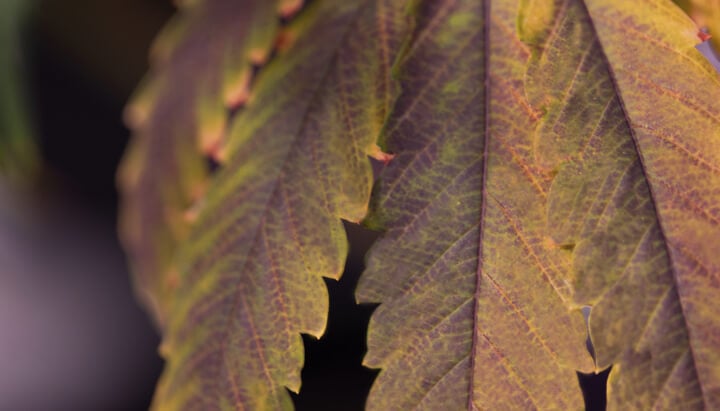
-
Leaf Yellowing
The main visible manifestation of molybdenum deficiency is yellow and pale leaves. This discolouration typically occurs between the veins and along the edges of leaves. Typically, the older leaves in the canopy exhibit more severe symptoms.
-
Dark Brown Spots
As molybdenum deficiency advances, dark spots start to emerge within the yellowing leaf tissue. This mottling not only looks bad, but it affects the ability of the leaf to produce sugars by way of photosynthesis.
-
Leaf Curling
Another symptom to look out for is curling at the leaf margins. In severe cases, necrosis (tissue death) adds insult to injury. The death of leaf cells limits photosynthesis and predisposes plants to infections.
-
Stunted Growth
Molybdenum deficiency can cause stunted growth in cannabis plants through two major pathways. First, a lack of proper nutrient metabolism interrupts amino acid synthesis and chemical reactions dependent upon proteins (which are built from amino acids). Second, the symptoms themselves directly compromise leaf function and reduce sugar production.
Causes of Molybdenum Deficiency When Growing Weed
These symptoms seem pretty serious, right? But what exactly causes plants to miss out on enough molybdenum to begin with?
- Overly acidic pH: The concentration of hydrogen cations in the soil, measured by pH, has a large sway over how well plants uptake molybdenum. Cannabis plants thrive in a slightly acidic pH of around 6.0. However, molybdenum availability decreases significantly when pH*drops below 5.5[5]. Therefore, growers need to pay special attention to pH throughout the growing cycle to prevent molybdenum deficiency.
- Excess iron: Molybdenum and iron are antagonistic to each other, meaning they compete for uptake by plants. Excessive amounts of iron in your growing medium can limit access to molybdenum, potentially resulting in deficiency symptoms.
- Soil compaction: The health of plant roots can also impact nutrient uptake. Compacted soil can limit root growth and even contribute toward diseases. Unhealthy and underdeveloped roots are much less likely to uptake adequate levels of molybdenum throughout the growing cycle.


How to Treat Molybdenum Deficiency in Cannabis Plants
Catching the symptoms of molybdenum deficiency too late can certainly affect the overall health of your weed plants and the yields they produce. However, those with a keen eye can take swift action to restore their plants back to optimal health. Discover how to treat molybdenum deficiency in cannabis plants below.
Correct pH
First things first, you need to check your soil pH using a pH tester. Test your runoff after watering to see where things are sitting. If your pH has drifted below 6.0, use a pH-up formula, according to product instructions, to quickly restore balance.
Apply Micronutrient Foliar Spray
Regardless of the happenings in the soil below, you can quickly get molybdenum into your plants through the leaves. Foliar sprays deliver nutrients that bypass the root system and instead enter via small pores called stomata. Using a mister, apply a molybdenum foliar spray according to product instructions.
How to Prevent Molybdenum Deficiency When Growing Weed
The two methods above are reliable quick fixes when it comes to treating molybdenum deficiency in cannabis. However, by the time your plant’s leaves have started to mottle and curl, you’re treading on thin ice. With this in mind, it's worth learning how to prevent a molybdenum deficiency from showing up in the first place.
-
Frequently Measure Soil pH
Aim to measure your water runoff around once per week. This will enable you to catch any fluctuations early and stop them from spiralling out of control. Carefully monitoring and adjusting pH will allow molybdenum to remain fully accessible to your plants.
-
Manage Excess Iron
If you think you’re dealing with excess iron in your soil, you’ll need to get a soil test to confirm the potential issue. If the data shows too much iron in your growing medium, immediately forgo adding any manure to your medium as mulch. Consider incorporating lime into the topsoil to slightly raise pH and reduce symptoms of iron toxicity.
-
Aerate Your Soil
Aim to aerate your soil at the start of the growing season. Dig in a good amount of organic matter and go over your beds with a broadfork to create air channels. Perlite and sand are also good amendments if you’re working with soil that is particularly high in clay.
-
Select the Right Fertiliser
Reassess your fertiliser regimen. If you’ve experienced molybdenum deficiency in the past, contemplate adding a micronutrient blend into your approach. Considering that you’ve corrected pH, iron, and compaction issues, this will provide your plants with a steady supply of molybdenum right up until harvest.

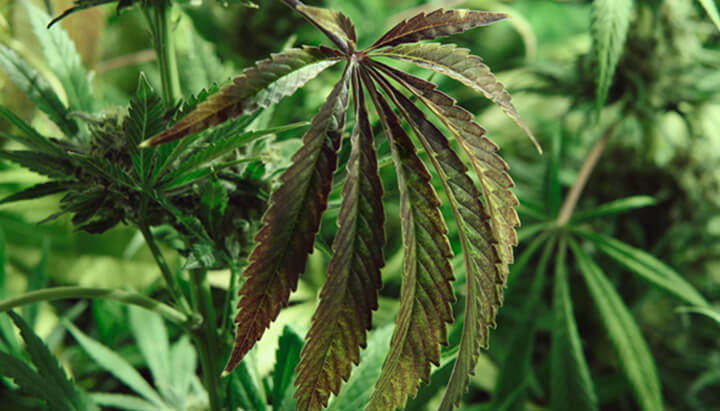
Molybdenum: A Little-Known Cannabis Micronutrient
You started this article having barely heard of molybdenum, and now you’re ending it as an expert in the element! You know the key functions of molybdenum in cannabis plants, what causes a deficiency, what deficiency symptoms look like, how to quickly treat them, and how to keep them at bay going forward.




























